Welcome to the
WalkMe Help Center
Please log in to continue

Please log in to continue

A jQuery selector is a string that targets an HTML element when WalkMe's default element selection cannot. Every page is made of HTML, and each visible element—buttons, headers, forms, images—is represented in that HTML structure. jQuery selectors allow WalkMe to locate elements using classes, IDs, or other attributes.
You may need jQuery if:
Before building a jQuery selector, check the Precision tab to confirm whether native selection can be improved.
Right-click on the element you need to target and select Inspect (Chrome/Safari) or Inspect Element (Firefox/IE).

This opens the browser's Developer Console, allowing you to view the page's HTML and locate the exact element WalkMe must target.
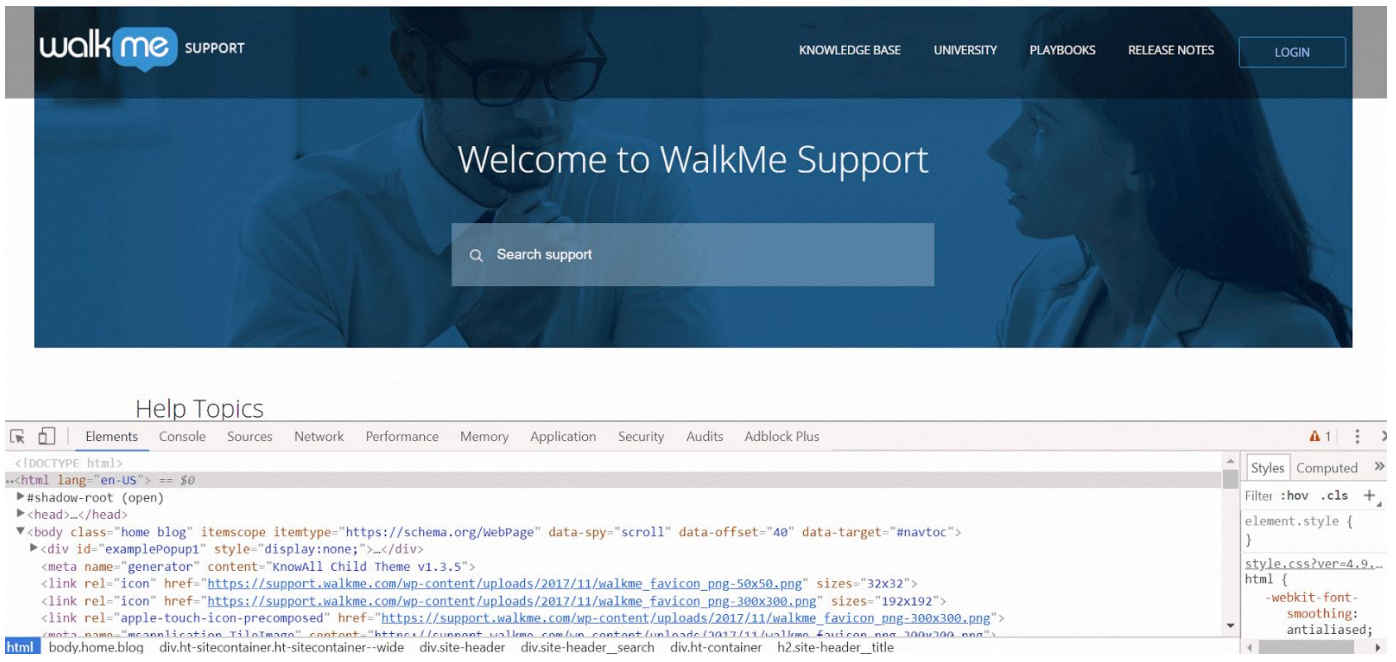
Inspecting the “Welcome to WalkMe Support” text highlights the HTML line:
<h2 class="site-header__title">
You can also click the cursor icon in the DevTools header to hover over elements and jump directly to their HTML representation. Hovering highlights the corresponding HTML line in blue. Clicking anchors the inspector to that element.
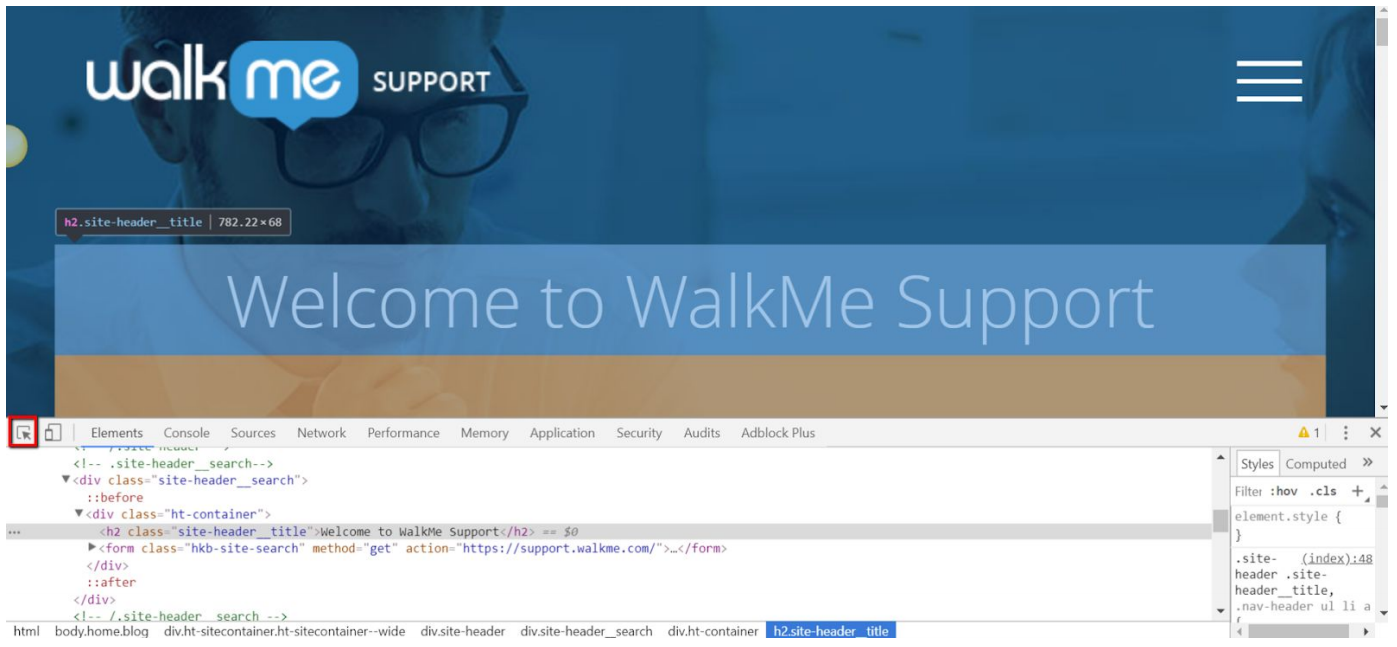
Common HTML elements include div, a (link), h2, p, form, input, img. Elements often contain classes, IDs, or attributes that describe them and can be used in your selector. Element types are helpful for orientation, but are not always required in the final selector.
Descriptors like classes, ID's, and attributes determine what those elements look like and how they behave on a page. When writing jQuery, the elements should always precede any descriptors. This means that you should never place a symbol of any sort before an element.
Classes are the most common descriptors. In HTML they appear as class="example". In jQuery, classes use the dot notation:
.site-header__title
If an element has an ID, prefer it over a class because IDs are more specific. IDs appear in HTML as id="name" and use # in jQuery.
From the example below, the search bar <input id="hkb-search" class="…"> can be targeted with the selector: #hkb-search
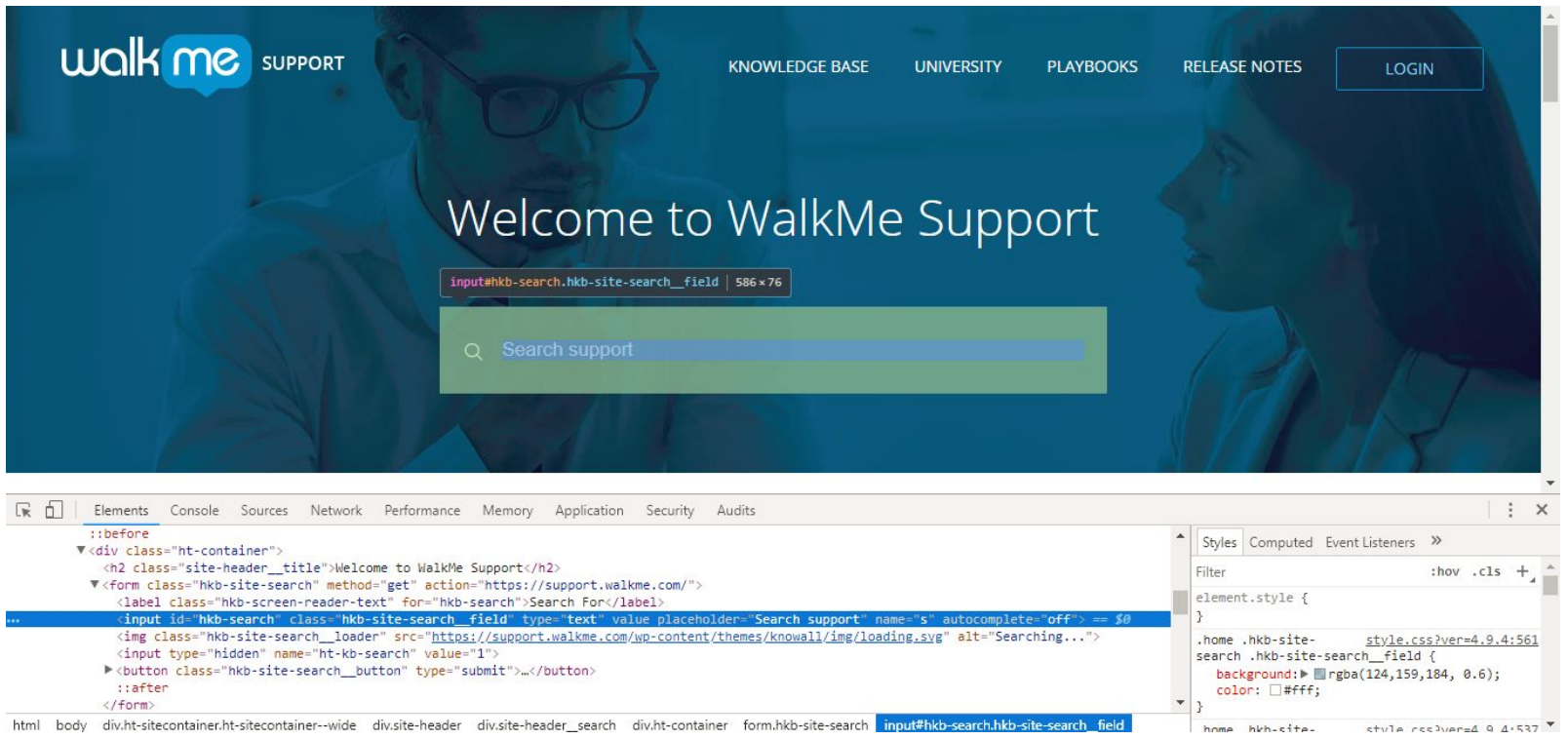
Elements inside iFrames require a context object. Use this template:
{"element": "#yourElement", "context": "iframe#iframeSelector"}
Example:
{"element": "h2.mainTitle", "context": "iframe#Main"}
To test in DevTools:
wmjQuery("#yourElement", wmjQuery("iframe#iframeSelector").contents())
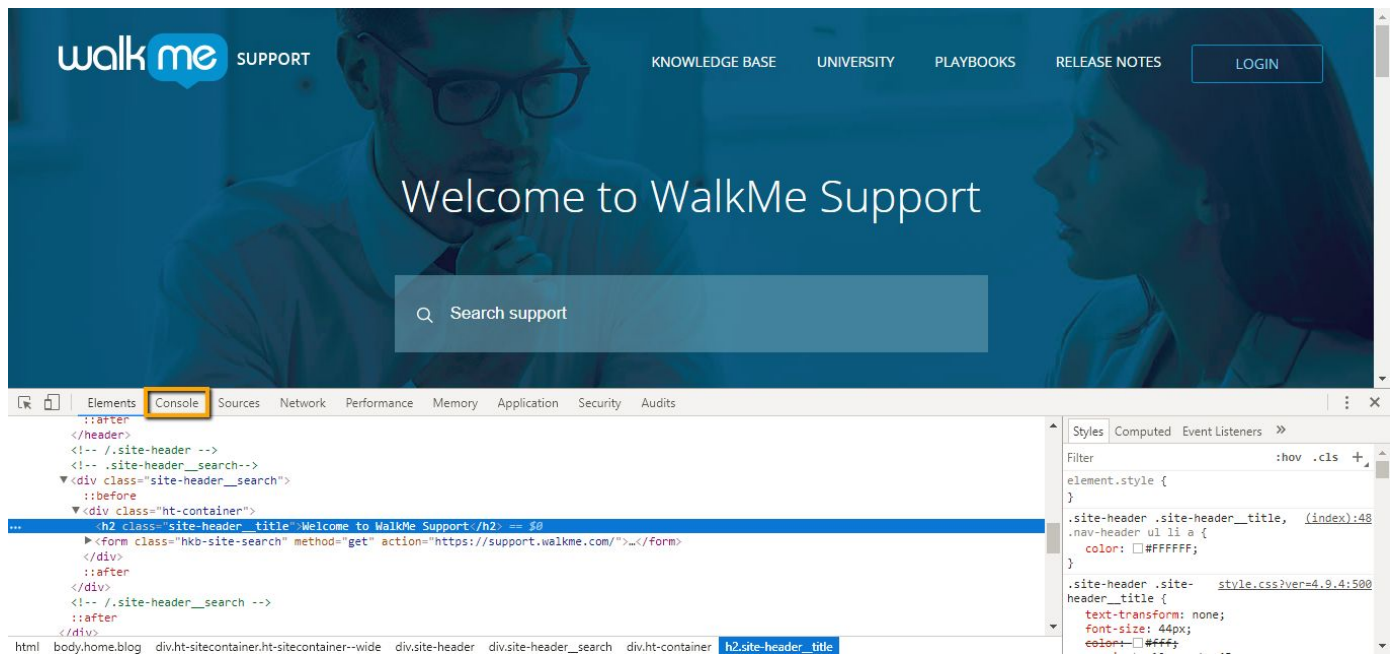
wmjQuery('yourSelector')
From the earlier example, we can enter:
wmjQuery('.site-header__title')

The console returns an object containing: length — how many elements matched your selector
Returns with a length of more than 1, mean multiple elements were found that match the selector. With any result over 1, we'd want to make the selector more
specific.
From our earlier example, testing .site-header__title returns length: 1 and highlights the selected element.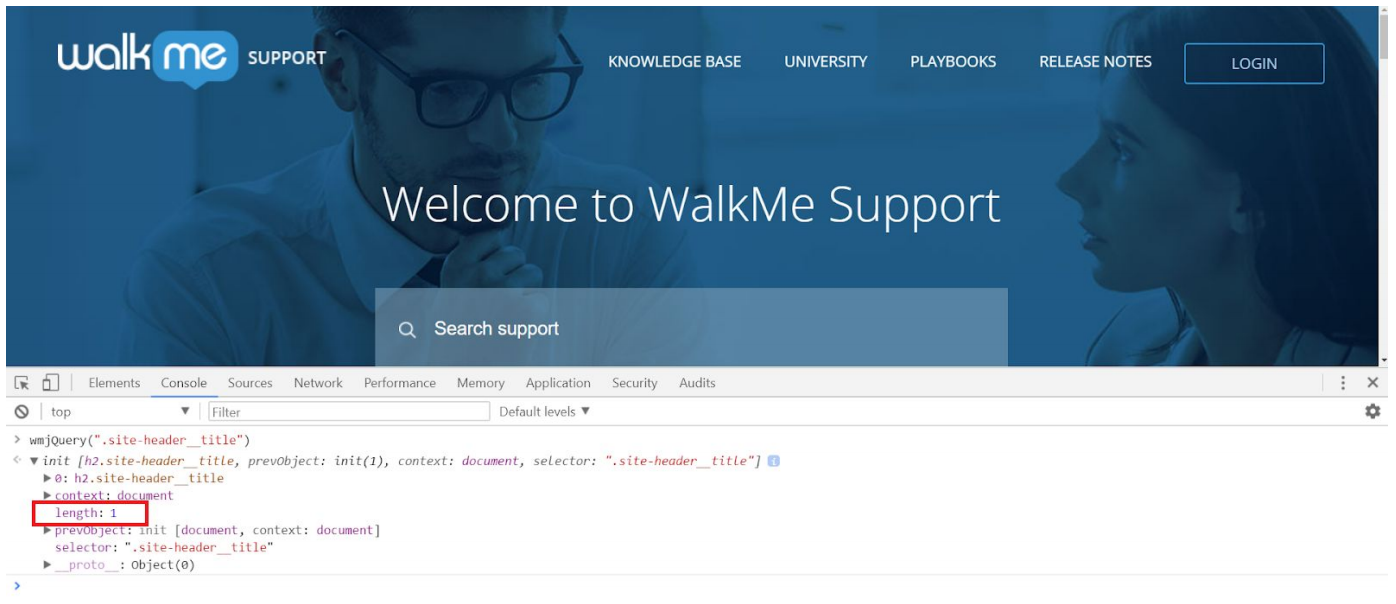
You can hover over any returned element in the DevTools results to confirm it highlights the correct element on the page.
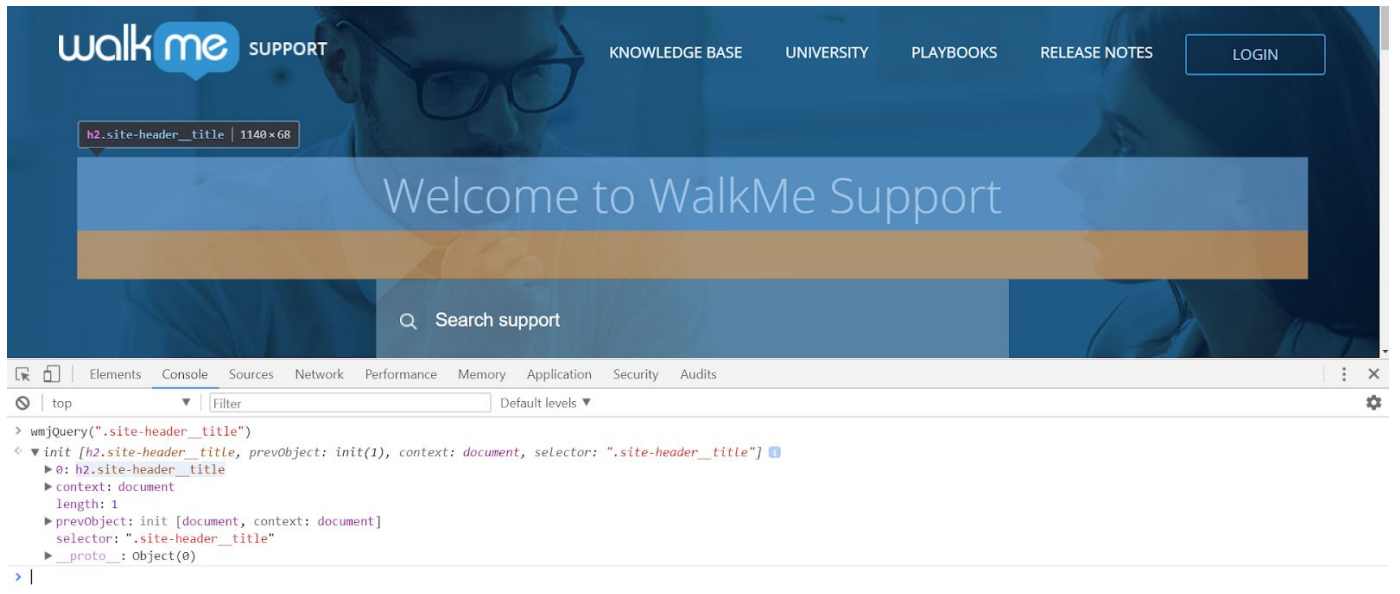
If a long selector returns a red exclamation mark in the Rule Engine, you can isolate the problem by breaking the selector into smaller pieces and testing each part.
For example, consider the incorrect selector:
div.ht-container form.hkb-site-serch

To troubleshoot it, begin with the first element and build the selector step-by-step:
Now add the final part: .hkb-site-serch. As soon as you add it, the Rule Engine changes from a green checkmark to a red exclamation mark. When you inspect the HTML, you'll see the issue: the class name is misspelled. It should be .hkb-site-search.
Once you correct the typo, the full selector
div.ht-container form.hkb-site-search
returns a checkmark again. That means the selector is now valid.
This method helps you quickly pinpoint which part of a selector is written incorrectly or no longer matches the page.
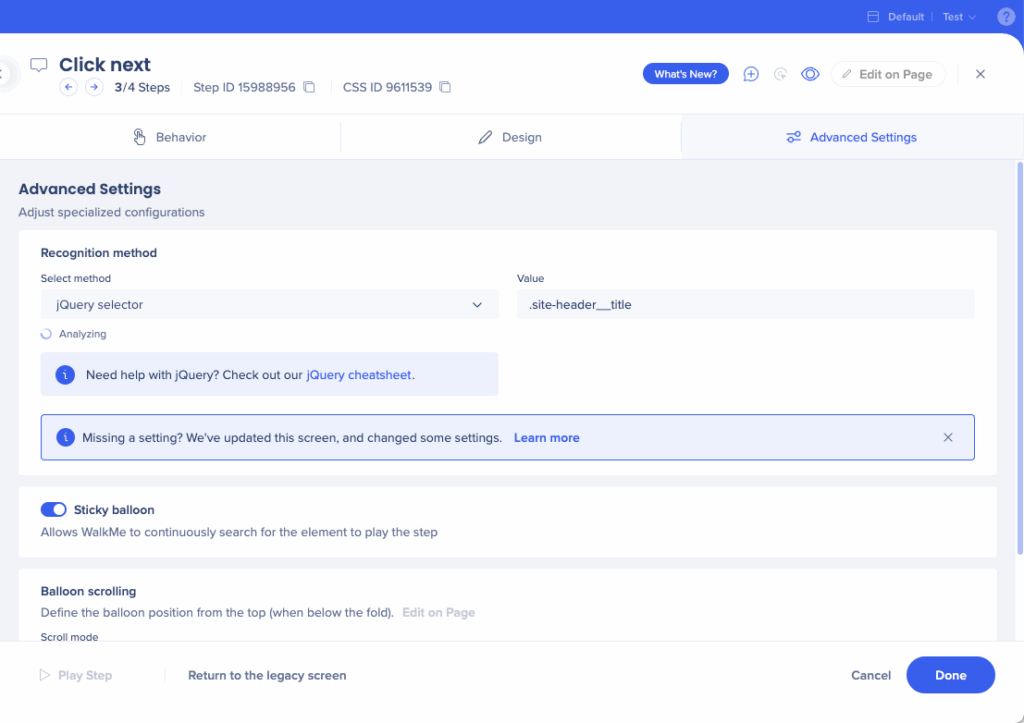
The same method works for Launchers, SmartTips, and any rule that supports jQuery selection.
If an element does not have a class or ID, you can target it using any of its attributes.
The basic format is:
[attribute="value"]
For example, the WalkMe Support logo does not have a class or ID, but its HTML includes the attribute:
href="https://support.walkme.com"
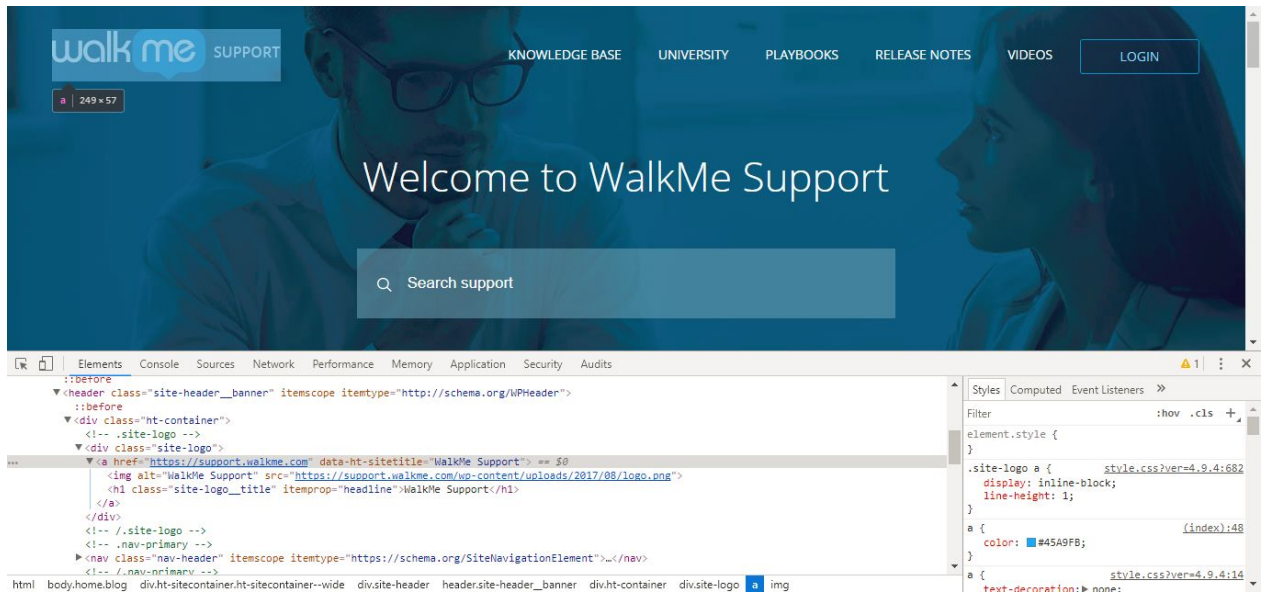
You can use this attribute to target the logo:
[href="https://support.walkme.com"]
The same element also contains another attribute:
data-ht-sitetitle="WalkMe Support"
You could target this using:
[data-ht-sitetitle="WalkMe Support"]
When targeting an attribute that is not a class or ID, always include the element type before the attribute. This helps WalkMe narrow the search and improves performance. For the Support logo, the correct selector is:
a[href="https://support.walkme.com"]
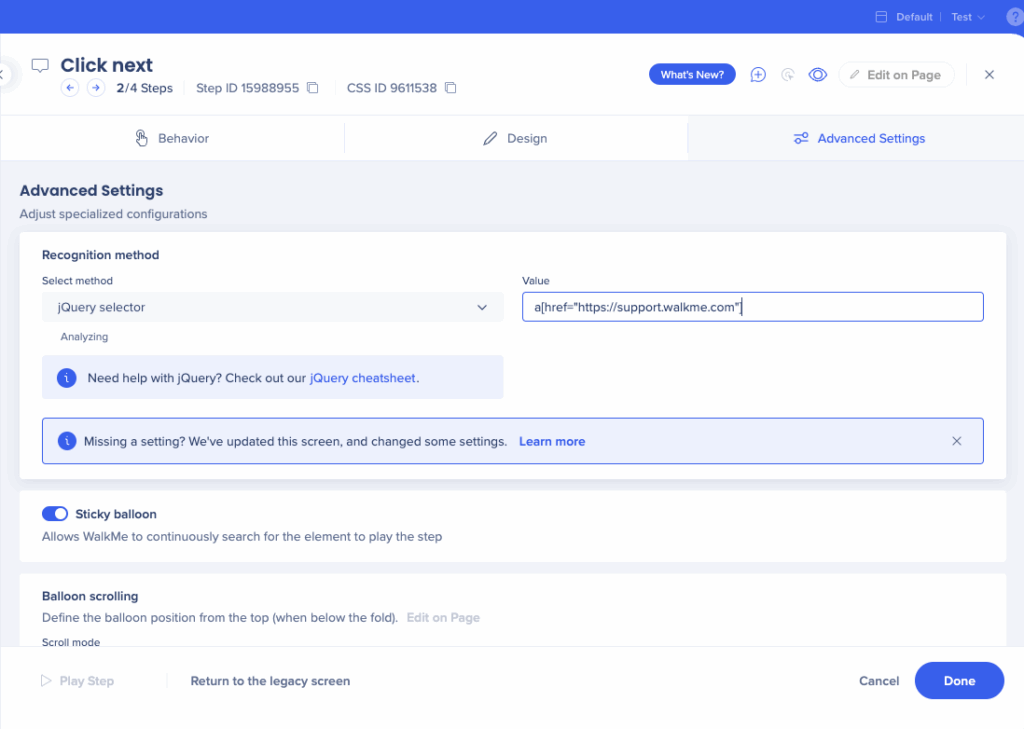
In HTML, a identifies a link, and href identifies the link destination. In this case, the logo is a link to the WalkMe Support page.
Although attributes like class and id can be targeted using the same [attribute="value"] format, it is more efficient to use the shortcuts .className and #idName whenever possible.
Targeting by attribute alone may return more than one result. For example, testing:
wmjQuery('[href="https://support.walkme.com"]')
on support.walkme.com returns length: 2.
This is because both the WalkMe Logo and the “Home” link share the same href attribute.
You might try adding the element type, a, but both elements are links, so:
a[href="https://support.walkme.com"]
still returns two matches.
To make the selector more specific, use parent–child structure found in the HTML. In DevTools, you can expand lines of HTML to see which elements contain others. The containing element is the parent, and the nested element is the child.
For example, the WalkMe Logo's parent is:
div.site-logo
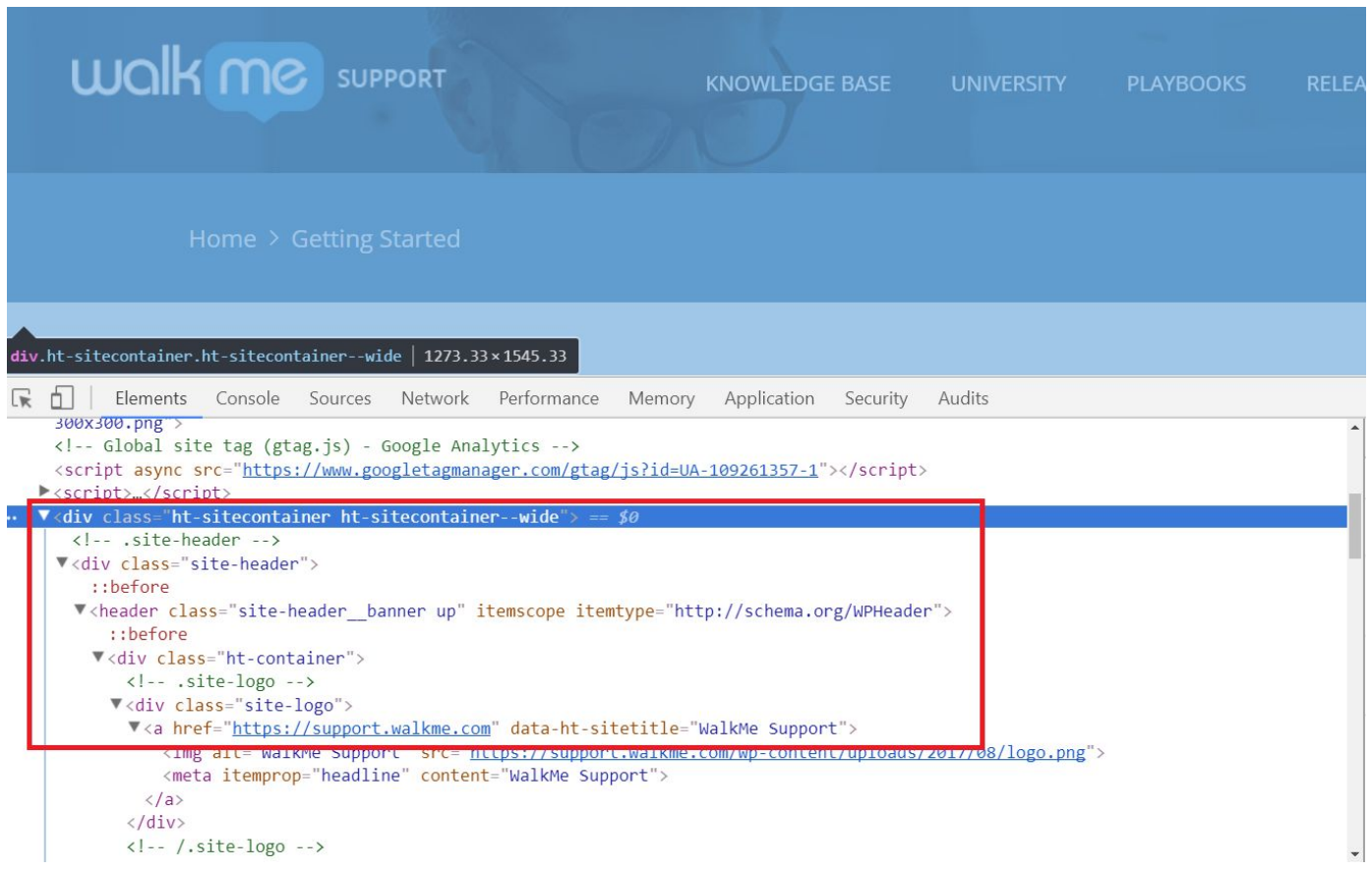 The “Home” link's parent is a different element: li with additional attributes
The “Home” link's parent is a different element: li with additional attributes
Because the parents differ, you can make your selector more specific by including both parent and child. Parent–child selectors are written with a space between them.
To target the “Home” link:
li [href="https://support.walkme.com"]
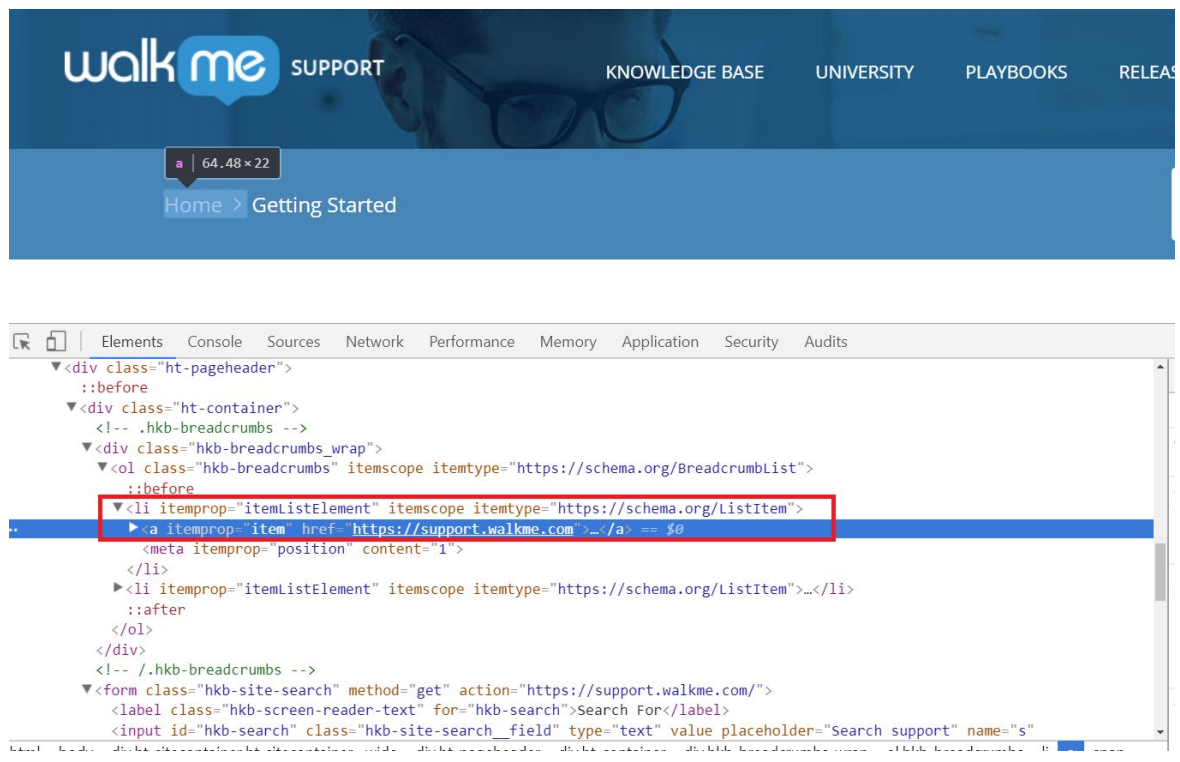 Testing this selector returns a single match, correctly identifying the “Home” text.
Testing this selector returns a single match, correctly identifying the “Home” text.
To target only the logo instead, use its known parent:
div.site-logo a[href="https://support.walkme.com"]
Understanding the parent–child hierarchy is one of the most reliable ways to refine selectors when multiple elements share similar attributes.
Modifiers allow you to further narrow a jQuery selector by adding rules at the end of the selector. Although multiple modifiers can be combined, avoid using more than two to keep selectors maintainable.
Examples:
h2:contains(Welcome to WalkMe):visible
Selects an h2 element that contains the text “Welcome to WalkMe” and is visible on the screen.
.hkb-site-search:has([type="text"])
Selects the element with class hkb-site-search that contains a nested element with attribute type="text".
form.hkb-site-search input:eq(0)
:eq(n) selects the nth element in a zero-indexed list. eq(0) is the first matching input within the form.
form.hkb-site-search input:last
:last selects the last matching input element. Use :first to select the first.
Learn how to use a sibling modifier to find sibling elements.
Dynamic IDs are IDs that change each time the page loads. They typically look like long alphanumeric strings, for example:
id="00N00000067211_ilecell"
 Because this value changes on refresh, any selector using the full ID will break. Avoid using fully dynamic IDs whenever possible.
Because this value changes on refresh, any selector using the full ID will break. Avoid using fully dynamic IDs whenever possible.
If you must target an element with a dynamic ID, identify the stable portion of the ID—something readable or consistent, such as “ilecell” in the example above. Then use a partial attribute selector:
[id*="ilecell"]
The *= symbol means “contains”. This tells WalkMe to look for any ID that contains ilecell, even if the rest of the ID changes.
Partial selectors may match multiple elements. To prevent unintended matches, combine your partial ID selector with another part of the element's structure or attributes. For example:
[id*="ilecell"].inlineEditWrite
or
.dataCol.inlineEditWrite[id*="ilecell"]
This approach keeps your selector stable while ensuring it matches the correct element.